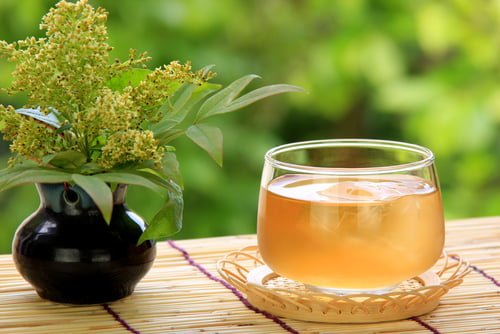They are hardened deposits of digestive fluid which are forming in the gallbladder. We know that the gallbladder is small and pear – shaped organ which is located on the right side of the abdomen just beneath the liver. The gallbladder holds bile which is a digestive fluid and this fluid is released into the small intestine. Gallstones can range in their size from as small as a grain of sand to large as golf ball. There are some people who develop just one gallstone while other people can have many different gallstones at the same time. People who are experiencing symptoms from their gallstones usually need gallbladder removal surgery. Gallstones that do not cause any signs and symptoms usually do not need treatment. [1,2]
Symptoms of Gallstones
Gallstones can cause no signs and symptoms. If the gallstone lodges in a duct and it causes a blockage, then the resulting signs and symptoms can include:
- Nausea or vomiting
- Pain in your right shoulder
- Back pain between your should blades
- Sudden and rapidly intensifying pain in the center of your abdomen, just below your breastbone
- Sudden and rapidly intensifying pain in the upper right portion of your abdomen
The gallstone pain can last from several minutes to a few hours.

Causes of Gallstones
It is not clear what the cause for gallstones to form is. Doctors think that the gallstones can result when:
- Your gallbladder does not empty correctly: If your gallbladder does not empty completely or often enough, then the bile can become very concentrated which can contribute to gallstones formation. [1,3]
- Your bile contains too much cholesterol: Normally, the bile has enough chemicals to dissolve the cholesterol which is excreted by the liver. But if your liver excretes more cholesterol than your bile can dissolve, then the excess cholesterol can form intro crystals and eventually into stones. [1,4]
- Your bile contains too much bilirubin: When our body breaks down red blood cells, then a chemical called bileirubin is produced. There are some conditions which can cause the liver to make too much bilirubin including biliary tract infections, liver cirrhosis and some blood disorders. The excess bilirubin contributes to gallstone formation. [1,5]
Types of gallstones: Here are types of gallstones:
- Pigment gallstones: These dark brown or black stones form when the bile has too much bilirubin.
- Cholesterol gallstones: Cholesterol gallstone is the most common type of gallstone. It often appears yellow in color. This type of gallstone is mainly composed of undissolved cholesterol but it can have other components.
Risk factors: Here are some factors which can increase your risk of gallstones [1,6]:
- Having liver disease
- Taking medications that contain estrogen, such as oral contraceptives or hormone therapy drugs
- Losing weight very quickly
- Having diabetes
- Having a family history of gallstones
- Eating a low – fiber diet
- Eating a high – cholesterol diet
- Eating a high – fat diet
- Being pregnant
- Being sedentary
- Being overweight or obese
- Being a Mexican – American
- Being a Native American
- Being age 40 or older
- Being female
Complications: Complications of gallstones can include:
- Gallbladder cancer: People who have had gallstones are having an increased risk of developing gallbladder cancer. This type of cancer is very rare, even though there is a risk of cancer is elevated, the likelihood of this type of cancer is still very small. [7]
- Inflammation of the gallbladder: The gallstone which becomes lodged in the neck of the gallbladder can cause inflammation of the gallbladder which is known as cholecystitis. This type of inflammation can cause severe pain and fever.
Blockage of the pancreatic duct: The pancreatic duct is a tub which is running from the pancreas to the common bile duct. Pancreatic juices flow through the pancreatic duct. These juices aid in the digestion. A gallstone can cause a blockage in the pancreatic duct that is leading to inflammation of the pancreas, which is known as pancreatitis. This inflammation can cause intense and constant abdominal pain and usually it required hospitalization.
References:
[1] Njeze GE. Gallstones. Nigerian Journal of Surgery. 2013;19(2):49–55.
[2] American College of Surgeons. Cholecystectomy: Surgical removal of the gallbladder. Retrieved from www.facs.org/~/media/files/education/patient%20ed/cholesys.ashx
[3] Imber C. The truth about gallstones. Royal Free London Private Patients. Retrieved from www.royalfreehadleywood.com/the-truth-about-gallstones/
[4] Wang HH, Portincasa P, de Bari O, et al. Prevention of cholesterol gallstones by inhibiting hepatic biosynthesis and intestinal absorption of cholesterol. European Journal of Clinical Investigation. 2013;43(4): 413–26.
[5] Heuman DM. What is the role of bilirubin in the formation of gallstones? Medscape. 2019. Retrieved from www.medscape.com/answers/175667-10125/what-is-the-role-of-bilirubin-in-the-formation-of-gallstones
[6] Ansari-Moghaddam A, Khorram A, Miri-Bonjar M, et al. The prevalence and risk factors of gallstone among adults in South-East of Iran: A population-based study. Global Journal of Health Science. 2016;8(4):60–7.
[7] American Cancer Society. Risk factors for gallbladder cancer. Retrieved from www.cancer.org/cancer/gallbladder-cancer/causes-risks-prevention/risk-factors.html




